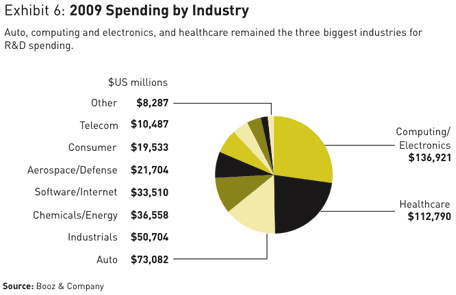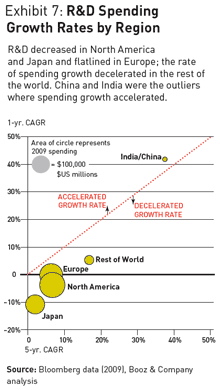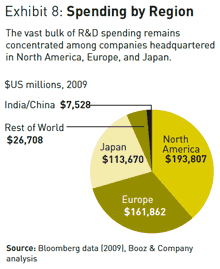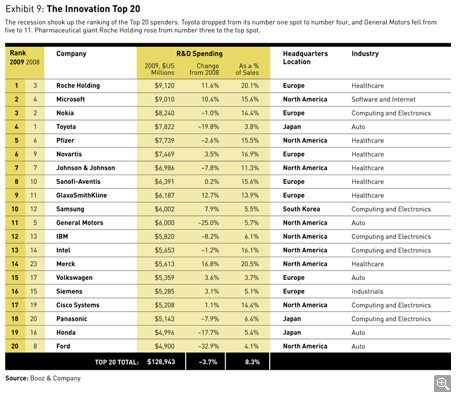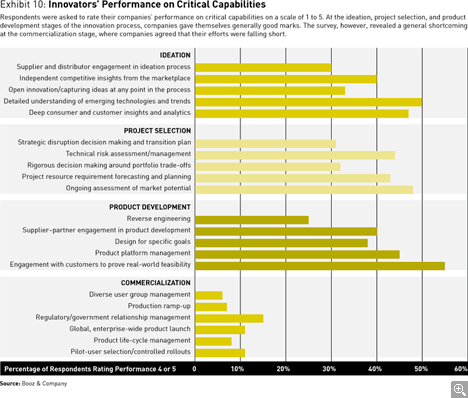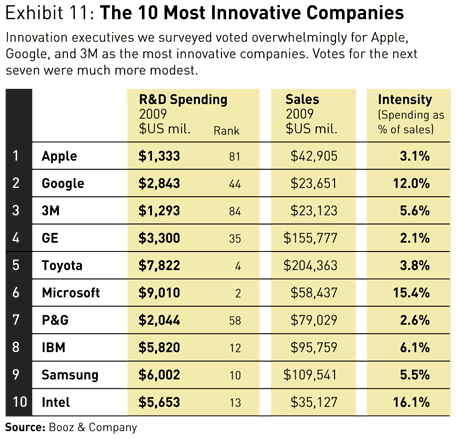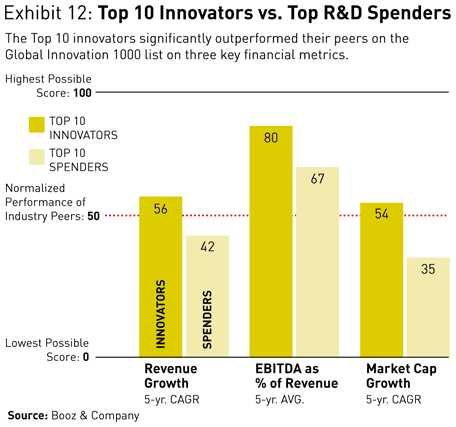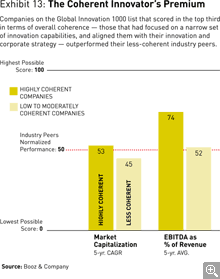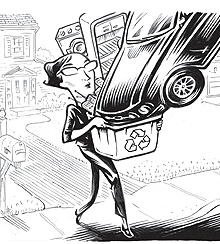Assessing its impact as well as its volume will help companies take better advantage of buzz.
McKinsey Quarterly
APRIL 2010 • Jacques Bughin, Jonathan Doogan, and Ole Jørgen Vetvik


Audio
Download MP3
Consumers have always valued opinions expressed directly to them. … As consumers overwhelmed by product choices tune out the ever-growing barrage of traditional marketing, word of mouth cuts through the noise quickly and effectively.
Indeed, word of mouth1 is the primary factor behind 20 to 50 percent of all purchasing decisions. … And its influence will probably grow: the digital revolution has amplified and accelerated its reach to the point where word of mouth is no longer an act of intimate, one-on-one communication. …
As online communities increase in size, number, and character, marketers have come to recognize word of mouth’s growing importance. But measuring and managing it is far from easy. … Understanding how and why messages work allows marketers to craft a coordinated, consistent response that reaches the right people with the right content in the right setting. …
A consumer-driven world
… As consumers have become overloaded, they have become increasingly skeptical about traditional company-driven advertising and marketing and increasingly prefer to make purchasing decisions largely independent of what companies tell them about products.
This tectonic power shift toward consumers reflects the way people now make purchasing decisions.2 Once consumers make a decision to buy a product, they start with an initial consideration set of brands formed through product experience, recommendations, or awareness-building marketing. … [Consumers] gather product information from a variety of sources and decide which brand to purchase. Their post-sales experience then informs their next purchasing decision. While word of mouth has different degrees of influence on consumers at each stage of this journey (Exhibit 1), it’s the only factor that ranks among the three biggest consumer influencers at every step.
Exhibit 1: Word of mouth is influential throughout the consumer decision journey.
It’s also the most disruptive factor. Word of mouth can prompt a consumer to consider a brand or product in a way that incremental advertising spending simply cannot. … In the mobile-phone market, for example, we have observed that the pass-on rates for key positive and negative messages can increase a company’s market share by as much as 10 percent or reduce it by 20 percent over a two-year period, all other things being equal. This effect alone makes a case for more systematically investigating and managing word of mouth.
Understanding word of mouth
While word of mouth is undeniably complex and has a multitude of potential origins and motivations, we have identified three forms of word of mouth that marketers should understand: experiential, consequential, and intentional.
Experiential
Experiential word of mouth is the most common and powerful form, typically accounting for 50 to 80 percent of word-of-mouth activity in any given product category. It results from a consumer’s direct experience with a product or service, largely when that experience deviates from what’s expected. …
Consequential
… The most common is what we call consequential word of mouth, which occurs when consumers directly exposed to traditional marketing campaigns pass on messages about them or brands they publicize. …Marketers need to consider both the direct and the pass-on effects of word of mouth when determining the message and media mix that maximizes the return on their investments.
Intentional
A less common form of word of mouth is intentional—for example, when marketers use celebrity endorsements to trigger positive buzz for product launches. …
What marketers need for all three forms of word of mouth is a way to understand and measure its impact and financial ramifications, both good and bad.
Word-of-mouth equity
A starting point has been to count the number of recommendations and dissuasions for a given product. There’s an appealing power and simplicity to this approach, but also a challenge: it’s difficult for marketers to account for variability in the power of different kinds of word-of-mouth messages. … In fact, our research shows that a high-impact recommendation—from a trusted friend conveying a relevant message, for example—is up to 50 times more likely to trigger a purchase than is a low-impact recommendation.
To assess the impact of these different kinds of recommendations, we developed a way to calculate what we call word-of-mouth equity. … By looking at the impact—as well as the volume—of these messages, this metric lets a marketer accurately test their effect on sales and market share for brands, individual campaigns, and companies as a whole (Exhibit 2). That impact—in other words, the ability of any one word-of-mouth recommendation or dissuasion to change behavior—reflects what is said, who says it, and where it is said. It also varies by product category.
Exhibit 2: By looking at impact as well as volume, marketers can measure the effects of word-of-mouth messages more accurately.
 Image via Wikipedia
Image via WikipediaWhat’s said is the primary driver of word-of-mouth impact. Across most product categories, we found that the content of a message must address important product or service features if it is to influence consumer decisions. In the mobile-phone category, for example, design is more important than battery life. … Marketers tend to build campaigns around emotional positioning, yet we found that consumers actually tend to talk—and generate buzz—about functional messages.
The second critical driver is the identity of the person who sends a message: the word-of-mouth receiver must trust the sender and believe that he or she really knows the product or service in question. … About 8 to 10 percent of consumers are what we call influentials, whose common factor is trust and competence. Influentials typically generate three times more word-of-mouth messages than noninfluentials do, and each message has four times more impact on a recipient’s purchasing decision. About 1 percent of these people are digital influentials—most notably, bloggers—with disproportionate power.
Finally, the environment where word of mouth circulates is crucial to the power of messages. Typically, messages passed within tight, trusted networks have less reach but greater impact than those circulated through dispersed communities—in part, because there’s usually a high correlation between people whose opinions we trust and the members of networks we most value. …
Word-of-mouth equity empowers companies by allowing them to understand word of mouth’s relative impact on brand and product performance. … When Apple’s iPhone was launched in Germany, … its share of word-of-mouth volume in the mobile-phone category—or how many consumers were talking about it—was about 10 percent, or a third less than that of the market leader. Yet the iPhone had launched in other countries, and the buzz accompanying those messages in Germany was about five times more powerful than average. This meant the iPhone’s word-of-mouth equity score was 30 percent higher than that of the market leader, with three times more influentials recommending the iPhone over leading handsets. As a result, sales directly attributable to the positive word of mouth surrounding the iPhone outstripped those attributable to Apple’s paid marketing sixfold. …
Harnessing word of mouth
The rewards of pursuing excellence in word-of-mouth marketing are huge, and it can deliver a sustainable and significant competitive edge few other marketing approaches can match. … [The] incremental gain from outperforming competitors with superior television ads, … is relatively small. That’s because all companies actively manage their traditional marketing activities and all have similar knowledge. With so few companies actively managing word of mouth—the most powerful form of marketing—the potential upside is exponentially greater.
The starting point for managing word of mouth is understanding which dimensions of word-of-mouth equity are most important to a product category: the who, the what, or the where. In skincare, for example, it’s the what; in retail banks, the who. Word-of-mouth-equity analysis can detail the precise nature of a category’s influentials and pinpoint the highest-impact messages, contexts, and networks. …
… Harnessing experiential word of mouth is fundamentally about providing customers with the opportunity to share positive experiences and making the story relatable and relevant to the audience. … [Consumers] are more likely to talk about a product early in its life cycle, which is why product launches or enhancements are so crucial to generating positive word of mouth. Buzz also can be sustained after launch: …
… To create positive word of mouth that actually has impact, the customer experience must not only deviate significantly from expectations but also deviate on the dimensions that matter to the customer and that he or she is likely to talk about. For instance, while battery life is a crucial driver of satisfaction for mobile-handset consumers, they talk about it less than other product features, such as design and usability. …
Managing consequential word of mouth involves using the insights provided by word-of-mouth equity to maximize the return on marketing activities. …. In fact, McKinsey research shows that marketing-induced consumer-to-consumer word of mouth generates more than twice the sales of paid advertising in categories as diverse as skincare and mobile phones.
Two things supercharge the creation of positive consequential word of mouth: interactivity and creativity. … One example of a company successfully harnessing this power is the UK confectioner Cadbury, whose “Glass and a Half Full” advertising campaign used creative, thoughtful, and integrated online and traditional marketing to spur consumer interaction and sales.
The campaign began with a television commercial featuring a gorilla playing drums to an iconic Phil Collins song. … The concept so engaged consumers that they were willing to go online, view the commercial, and create amateur versions of their own, triggering a torrent of YouTube imitations. Within three months of the advertisement’s appearance, the video had been viewed more than six million times online, year-on-year sales of Cadbury’s Dairy Milk chocolate had increased by more than 9 percent, and the brand’s positive perception among consumers had improved by about 20 percent.
Intentional word-of-mouth campaigns revolve around identifying influentials who become brand and product advocates. … [Ambitious] marketers can use word-of-mouth equity insights to shift from consequential to intentional campaigning.
 Image via Wikipedia
Image via WikipediaThe type of campaign that companies choose to adopt depends on the degree to which marketers can find and target influentials. … Mobile carriers have granular customer data that can precisely locate influentials who know the category, talk to many people, and provide them with trusted opinions. That means messages can be directed at specific individuals who are most likely to spread positive word of mouth through their social networks. As a message spreads, this approach generates an exponential word-of-mouth impact, similar to the ripple effect when a pebble is dropped in a pond.
Companies unable to target influentials precisely must take a different approach. While Red Bull, for example, can’t send text messages to specific consumers, it has successfully deployed science to orchestrate effective intentional word-of-mouth campaigns. After identifying influentials among its different target segments, the energy-drink company ensures that celebrities and other opinion makers seed the right messages among consumers, often through events. While it can’t be sure who will attend, Red Bull knows that those who do will be the kinds of consumers it seeks—and that the positive messages they will relay across their own social networks can generate a superior return for its marketing investment.
Marketers have always been aware of the effect of word of mouth, and there is clearly an art to effective word-of-mouth campaigning. Yet the science behind word-of-mouth equity helps reveal how to hone and deploy that art: it shows which messages consumers are likely to pass on and the impact of those messages, allowing marketers to estimate the tangible effect word of mouth has on brand equity and sales. These insights are essential for companies that want to harness the potential of word of mouth and to realize higher returns on their marketing investments.

About the Authors
Jacques Bughin is a director in McKinsey’s Brussels office, Jonathan Doogan is an associate principal in the London office, and Ole Jørgen Vetvik is a principal in the Oslo office.
Notes
1 The term word of mouth, as used in this article, means consumer-to-consumer communication with no economic incentives. The sender may, however, reap social gratification or rewards.
2 See David Court, Dave Elzinga, Susan Mulder, and Ole Jørgen Vetvik, “The consumer decision journey,” mckinseyquarterly.com, June 2009.
Image via WikipediaThe idea of opening America's interior through a canal linking upstate New York to the Great Lakes region had been floating around for decades. … A more ambitious plan would be to connect Lake Erie to the Hudson River.
Image via WikipediaDeWitt Clinton was born in Little Britain, N.Y. to a family that was increasingly politically prominent. His father James Clinton was a Revolutionary War general, and his uncle George Clinton would become governor of New York and later vice president.
Image via WikipediaDeWitt graduated on April 11, 1786 from what is now Columbia University, giving a commencement speech in Latin with the U.S. Congress in attendance.
Image via WikipediaClinton was contemplating another run for the presidency in the 1828 election.
Image via WikipediaAbout the Author








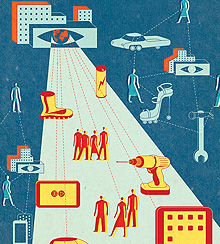

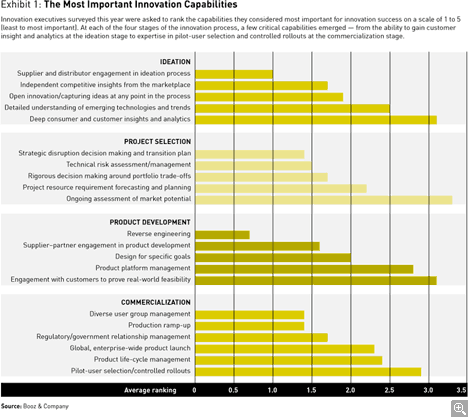
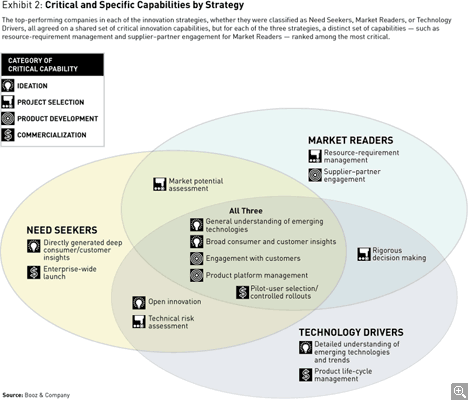
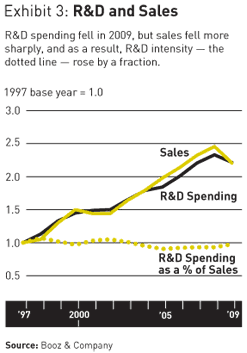
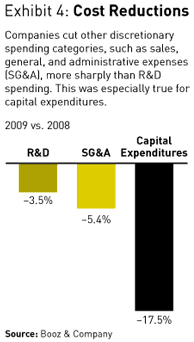
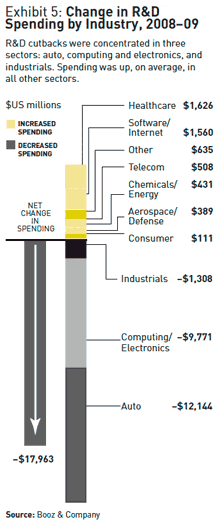 last year, and virtually every company in the industry cut spending in all areas of operations. Still, the industry’s 14 percent decrease in R&D spending was roughly in line with its 12.7 percent decrease in revenue; as a result, the auto industry’s R&D intensity was essentially unchanged, at 3.9 percent.
last year, and virtually every company in the industry cut spending in all areas of operations. Still, the industry’s 14 percent decrease in R&D spending was roughly in line with its 12.7 percent decrease in revenue; as a result, the auto industry’s R&D intensity was essentially unchanged, at 3.9 percent.